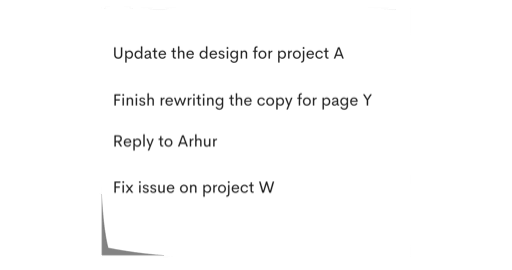Do you know the Pomodoro Method? Here's a quick slice of the benefits hidden behind its rituals.
It's hard to define tasks in the right way.
You'll find this advice everywhere:
Only define goals and tasks you have control over.
Tasks that you don't have control over are productivity killers.
For example: "get a positive answer to proposal X," "get thousands of followers," "finish project in time."
These goals mess with your definition of done.
The world is moving around you, and it's hard to achieve something and get a feeling of progress if it depends more on the rest of the world than on your actions.
That's why I like the Pomodoro Method: When you start using it, it'll force you to add a subtle layer of Pomodoro on top of each task.
The Pomodoro Method redefines how you measure success
Your task list for today might resemble something like that:
How many of these depend on something external?
What happens when the requirements for Project A change and you have to start over? Do you need to wait for another document before replying to Arthur? Or what if the complexity of the issue you were working on explodes and you need to make three more decisions before finishing your job?
On some days, I might end up with zero tasks completed. Even after seven, eight, or ten hours in front of a computer. This is exhausting.
At the end of the day, I might have completed ZERO tasks. But when I apply the Pomodoro Method, I still have feedback of the time I spent pushing things forward anyway:
That would be a fantastic day. These Xs mean that I completed fourteen sessions of 30 minutes of deep focus. That's 7 hours of work. And these two C mean that I slid out of focus only twice during the day.
I can tell how much progress I made with the Pomodoro Method, even if I couldn't complete any task.
That's where the Pomodoro Method is ingenious. It adds a subtle layer where "a deep focus session" is a success in itself.
The one thing you have control over, your focus, becomes the real subject of most tasks. And with the Pomodoro "layer", you have a metric of success that tells you if you've been focused and lets you ask, "should I change something in my workflow?."
This method is crucial to me; I'm trying to have more people use it "the right way." That's why I published an interactive step-by-step guide on my website. I'd love to know if this helped you in the comments.








Top comments (0)